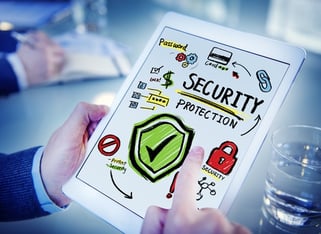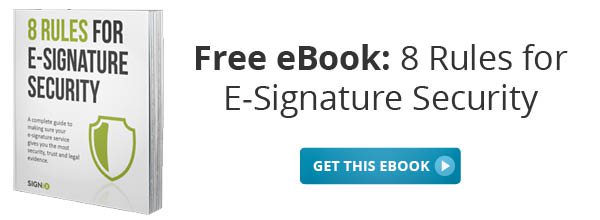
Building trust with technology isn’t quite as easy as falling backward into someone’s arms. Unless you have a technical background, cyber security can be difficult to grasp. Do you really know what 128-bit encryption is? Or how public and private keys work?
The fact is, when it comes to establishing the trust that supports e-signatures, you don’t need a high level of technical knowledge – just common sense and a basic understanding of the safeguards your e-signature vendor provides to verify a signer’s identity and their intention to sign something.
Distinguish Perception from Reality
Most people are comfortable with ink signatures, but it’s a common misconception that just because a document has been signed with ink, it’s safe, secure and valid. In fact, without physically meeting and talking with the signer:
- How do you know documents weren’t tampered with during delivery?
- How do you know the intended signer, and not someone else, received a document to be signed?
- How do you know the intended signer actually penned the signature?
Think about how much trust is involved in accepting the validity of an ink signature that was not signed right in front of you. For example, if you’ve never seen the signer’s signature before, how do you know it is actually their signature? If you know what the signature is supposed to look like, how do you know the one in front of you wasn't forged? And if the signature is on the last page of a multi-page document, how do you know that something in the preceding pages was not altered after the document was signed?
You really don’t know. You simply trust. You believe that what you perceive is real. This is not enough for e-signatures, where trust is based on verification, such as robust identity authentication that can go so far as confirming the signer’s answers to questions that only the signer would know. Tamper-evident technology makes it easy to see if a signed document has been altered, and or tamper-proof technology makes it impossible to make alterations. The reality of e-signatures – especially independent e-signatures, in which the evidence of their validity is embedded in the signed document – is that they are more trustworthy than traditional ink signatures.
Offer Transparency and Control
In the same way, building trust means providing all the facts. If signers have access to the entire signing process from a comprehensive audit trail, they’re able to keep close watch over their transaction and its process from identity authentication to opening and reviewing documents to signing. And with independent e-signature technology, signers can also view the evidence associated with signatures anytime they want – online or offline.
These tools not only give signers complete ownership of documents and information, they also provide an arsenal of evidence to use in a courtroom, if any signature is ever challenged.
Use Trusted Technology
People trust those who are trustworthy. Companies that use e-signature technology that goes above and beyond security requirements will naturally win over trust. That means, e-signature solution providers should meet and exceed the highest of public standards set for digital certificate issuance, encryption, data-storage, authentication, and more. Just meeting the provider’s internal security standards is not enough. To win your trust, an e-signature provider should adhere to external, published standards, such as those set by trusted international organizations like the ISO (International Organization of Standardization).
Educate Downstream
No matter how many thousands of dollars e-signatures will save your company, for an e-signature solution to be successful at every level, you must educate everyone involved on the importance your e-signature provider places on security and independence. Make sure signers have all the information they need to feel comfortable and confident with digitizing their John Hancock. When they do – consider your digital “trust fall” a success!
Looking for more insight on what makes an independent e-signature truly secure? Download our free e-book today!
%20formatted-1.png?width=2528&height=739&name=SIGNiX%20Logo%20Main%20(white)%20formatted-1.png)

